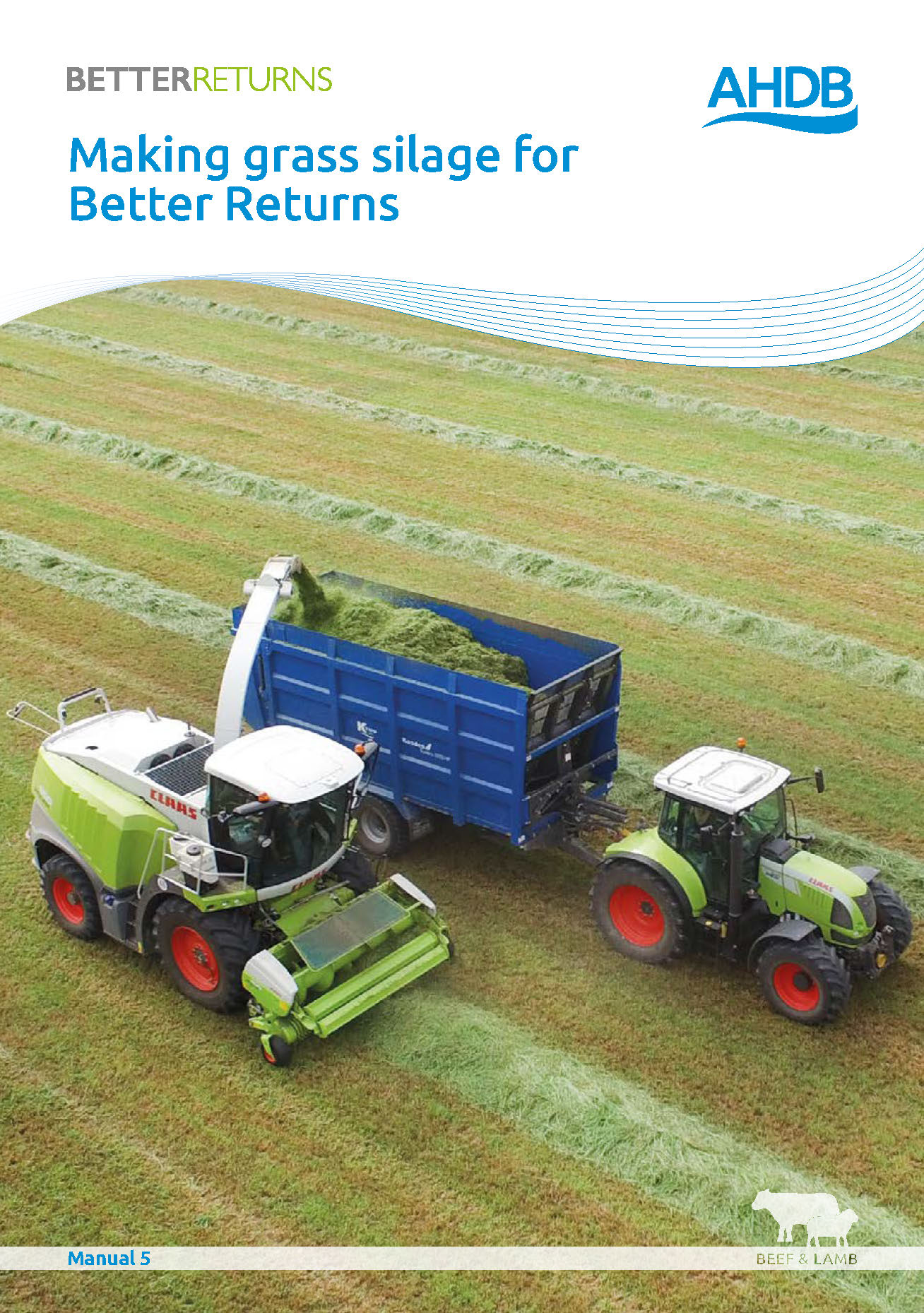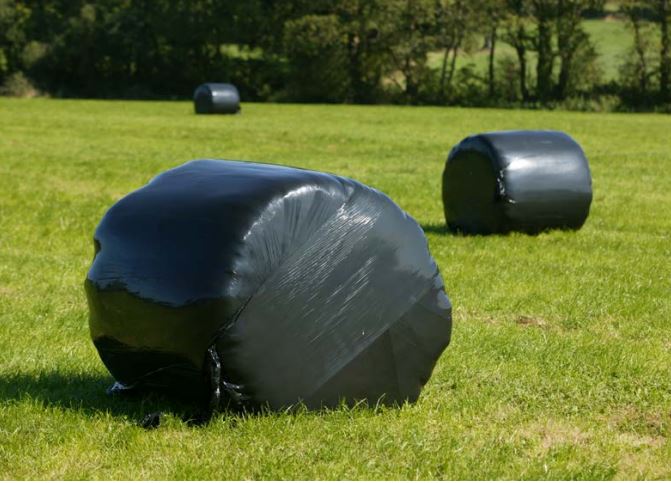- Home
- Knowledge library
- Clamp silage slippage
Clamp silage slippage
Summary
This study found that the single most important factor affecting silage slippage was inconsistent consolidation within the silage clamp during filling.
To overcome this the silage maker must:
a. Fill in layers of the same depth (>28% DM =15cm thick layers, 25-28% DM = 20cm thick layers and < 25% DM = 25cm thick layers)
b. Consolidate to the same extent for each and every load
c. Adjust chop length if the %DM of the incoming crop changes.
Monitoring the %DM content during the harvest period is good practice with every silage cut made. The quick hand squeeze method highlighted in the AHDB Making Grass Silage for Better Returns provides a how-to guide.
Consistent consolidation reduces variability in silage fermentation quality and thus reduces variation in CO2 and water production and reduces the risk of shifts in the silage mass. At lower %DM content undesirable fermentations are more extensive than in higher %DM silages resulting in an increased risk of slippage if inconsistent consolidation has occurred.
If the problem occurs every year, consider reducing the height of silage ensiled within each silage clamp to reduce the downward pressure and reduce the risk of slippage.
Previous advice on increasing chop length for low DM silages, ensuring the clamp is not filled too steeply, are still important guidelines to follow to reduce the risk of slippage.
Downloads
91110090 - Final Report 2020About this project
The Problem:
Each and every year a number of farms report problems with their silage slippage, which is when a vertical split develops in the stored silage and the front portion slips forward (see image 1). This often results in splitting the silage sheet and introduces significant oxygen into the stored silage and increasing aerobic deterioration of the silage. It has the potential to increase health and safety risk to both animals and staff in the farm environment. In extreme cases damage to infrastructure and farm equipment can also occur.
Aims and Objectives:
The project will focus on farmers that have experienced a problem in previous seasons or experience a problem during winter 2018/19. The aim of this work is to collect some preliminary data via surveys and site visits to identify underlying reasons behind the slippages to see if any common factors can be recognised. Further work may be needed once common factors have been established.
Literature review
There is very little scientific literature in this area as it’s not an easy topic to scientifically reproduce under controlled experimental conditions.
The current advice to reduce the likelihood of slippage is based on long-standing theories, which are based on little science. The main tips are altering chop length with the dry matter content, do not fill clamps at too steep an angle and do not over compact low DM silages. This advice has been in place for many decades and the process of silage making has generally changed from a farmer-based one to a contractor-based one. Many small but important factors have changed over the years, including grass cultivars used, stage of maturity at harvest and the size of harvesting machinery.
Objectives
- Identify physical, nutritional and management factors that increase the risks of silage clamp slippage
- Update advice to farmers on methods to reduce the risks associated with clamp slippage
Approach:
The overall objective is to assess silage factors, such as nutritive value, in particular D value and dry matter content, and physical factors, such as particle size and silage density, alongside the management factors at harvest to identify factors that may be leading to silage slippage.
Farms that have experienced clamp slippage will be recruited by AHDB through press releases, social media and knowledge exchange managers.
Each participating farmer will be sent a short and precise questionnaire to be completed. They will be asked to send two silage samples – one from the silage that has slipped and another from the silage immediately beyond the slip zone – for analysis to an agreed laboratory.
From the recruited farms,10 will be visited promptly to conduct further analyses such as particle size and density at a number of points across the open clamp face. In addition these farms will have a more detailed silage analysis conducted on samples obtained during the visit. This will include:
- density measurement by the core sampling method
- particle size distribution using the AHDB-adapted Penn State separator methodology
- initial nutritive value assessment by NIRS prediction followed by more detailed wet chemical approaches for dry matter, ash and fermentation parameters.
The work will be conducted by Silage Solutions Ltd (SSL) under the guidance of Dr David Davies. In addition SSL will work closely with AHDB KE officers and participating farmers to ensure maximum information recovery from all cases examined during the time frame of the study.



